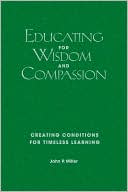Category Books
- Fiction Books & Literature
- Graphic Novels
- Horror
- Mystery & Crime
- Poetry
- Romance Books
- Science Fiction & Fantasy
- Thrillers
- Westerns
- Ages 0-2
- Ages 3-5
- Ages 6-8
- Ages 9-12
- Teens
- Children's Books
- African Americans
- Antiques & Collectibles
- Art, Architecture & Photography
- Bibles & Bible Studies
- Biography
- Business Books
- Christianity
- Computer Books & Technology Books
- Cookbooks, Food & Wine
- Crafts & Hobbies Books
- Education & Teaching
- Engineering
- Entertainment
- Foreign Languages
- Game Books
- Gay & Lesbian
- Health Books, Diet & Fitness Books
- History
- Home & Garden
- Humor Books
- Judaism & Judaica
- Law
- Medical Books
- New Age & Spirituality
- Nonfiction
- Parenting & Family
- Pets
- Philosophy
- Political Books & Current Events Books
- Psychology & Psychotherapy
- Reference
- Religion Books
- Science & Nature
- Self Improvement
- Sex & Relationships
- Social Sciences
- Sports & Adventure
- Study Guides & Test Prep
- Travel
- True Crime
- Weddings
- Women's Studies
Educating for Wisdom and Compassion: Creating Conditions for Timeless Learning »

Authors: John P. Miller
ISBN-13: 9781412917032, ISBN-10: 1412917034
Format: Hardcover
Publisher: Corwin Press
Date Published: July 2005
Edition: (Non-applicable)
Author Biography: John P. Miller
John P. (Jack) Miller, Ph.D., is Professor in the Department of Curriculum, Teaching, and Learning at the Ontario Institute for Studies in Education (OISE) at the University of Toronto and Head of OISE's Centre for Teacher Development. He has also been Visiting Professor at Shinwa Women's University in Kobe, Japan, and at Rietsumeiken University in Kyoto, Japan. Professor Miller teaches courses in holistic education and spirituality in education. He has also led workshops and given keynote addresses on those topics at conferences around the world. Notable among his many books, chapters, and journal articles are Holistic Learning and Spirituality in Education: Breaking New Ground (2005), Education and the Soul: Toward a Spiritual Curriculum (2000), The Contemplative Practitioner (1994), Holistic Learning: The Teacher's Guide to Integrated Studies (1990), The Holistic Curriculum (1988), The Compassionate Teacher (1981), and Humanizing the Classroom (1976). His writing has been translated into seven languages.
Book Synopsis
Essential principles of timeless learning include attention, contemplation, connection, participation, and responsibility; helping students achieve a sense of purpose; and improving alertness and mental health.
Table of Contents
Part I Timeless Learning: Definitions and Fundamentals
1. Timeless Learning
What Is Timeless Learning?
What Are the Characteristics of Timeless Learning?
Holistic/Integrative
Embodied
Connected
Soulful
Transformative
Flow
Participatory
Non-dualistic
Mysterious and unexplainable
Immeasurable
What Does Timeless Learning Bring to Today's Classrooms?
Conclusion
References
2. The Perennial Philosophy: A Relaxed Universalism
Foundations of the Perennial Philosophy
The interconnected nature of reality and the mysterious unity of the universe
The intimate connection between the individual's inner self, or soul, and the mysterious unity
Wisdom or knowledge of the mysterious unity can be developed through various contemplative practices
Values are derived from seeing and realizing the interconnectedness of reality
Awareness of the mysterious unity of existence leads to social action to counter injustice and human suffering
References
Part II Timeless Learning: Processes and Practices
3. Letting Go and Becoming Empty
Psychosynthesis and Dis-identification
David Hunt
Krishnamurti
The Bhagavad Gita and Non-Attachment
Spiritual Knowing
Just Let Go
References
4. Attention and Meditation
Meditation
Forms of Meditation
Intellectual Meditation
Emotional Meditation
Physical Meditation
Action Meditation
Meditation Practices
Insight
Body Scan
Mantra
Visualization
Movement meditation
Getting Started
Meditation With Children
Just One Minute by Naomi Baer
References
5. Compassion, Caring,and Lovingkindness
Kindness, Empathy, Compassion, and Love
Lovingkindness Practice
Caring in Schools
School with Forest and Meadow (Ojiya School)
Service Learning
Engaged Service
Community-Based Work
To Be and to Have
References
6. Contemplation, Mindfulness, and Presence
Mindfulness
Presence
Contemplation and Mindfulness in Classrooms
Contemplation and Action
References
Part III Timeless Learning: Perspectives, Examples, and Outcomes
7. Educational Perspectives on Timeless Learning
Transcendental Education
Emerson
Thoreau
Bronson Alcott
Holistic Education
Linear Thinking and Intuition
Relationship Between Mind and Body
Subject Connections
Community Connections
Earth Connections
Self Connections
Slow Education
Conclusion
References
8. Examples of Timeless Learning
Krishnamurti Schools
Principles of Learning
The School
The Teacher
Waldorf Education
Steiner's View of Development
Rhythm
Montessori Education
Conclusion
References
9. Creating Conditions for Timeless Learning in Public Schools
Work on Yourself
Be Fully Present
Recognize the Importance of the Nonverbal
Honor Silence
Develop a Rhythm
Integrate Timeless Learning with other Forms of Learning
Balancing Spontenaity and Planning
Don't Forget the Body
Live Your Own Truth
Acknowledge the Mystery
Let Your Humanity Come Through
References
10. The Fruits of Timeless Learning
The Present Educational Context
The Results of Timeless Learning
Research on Contemplative Practices
My Own Research
Nature of Mediation Practice
Personal Effects of Meditation Practice
Professional Effects of Meditation Practice
Profiles
Ultimate Outcomes of Timeless Learning
Wisdom and Compassion
Joy: The Singing Soul
Awe and Wonder
Wholeness
Sense of Purpose
References
Bibliography
Index
Subjects
 Educational Theory, Research & History
Educational Theory, Research & History  Education - History
Education - HistoryEducation & Teaching
 Learning
Learning  Holistic education
Holistic educationNew Age & Spirituality
 Healing
Healing  Meditation
MeditationNonfiction
 All Nonfiction
All Nonfiction  Education - General & Miscellaneous
Education - General & Miscellaneous
